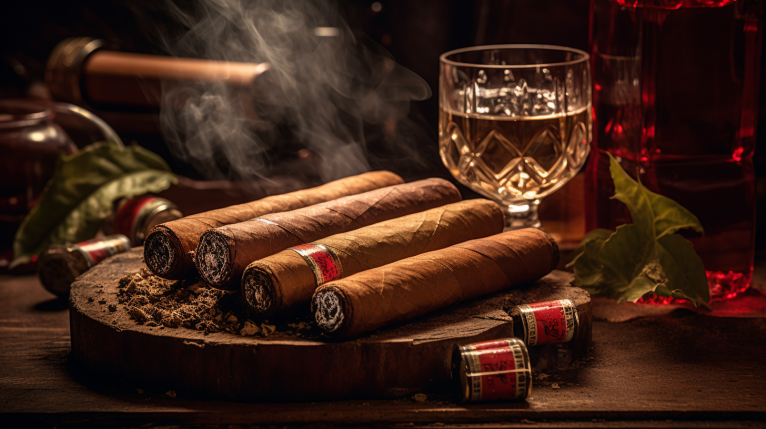Cigars, for many, are not just a form of indulgence but a symbol of status, luxury, and tradition. From the meticulous process of cultivation to the art of rolling, cigars have a rich history and a culture that spans continents and centuries. In this article, we’ll delve deep into the world of cigars, exploring their origins, the nuances of their flavors, and the rituals that surround them.
Origins and History
The history of cigars dates back to ancient civilizations. The Mayans, as depicted in their ancient artifacts, are believed to be among the first to roll tobacco leaves and smoke them. However, it was Christopher Columbus and his crew who introduced tobacco to Europe after their expedition to the Americas in the late 15th century. The Spanish and Portuguese sailors adopted the habit, and soon, tobacco smoking became popular across Europe.
By the 18th century, cigar smoking had become a status symbol among European nobility. Factories were established in Spain and parts of the Americas, leading to the mass production and global distribution of cigars.
The Art of Cultivation
The journey of a cigar begins in the fields. Tobacco plants require specific conditions to thrive—rich soil, consistent rainfall, and ample sunlight. The most renowned tobacco-growing regions include Cuba’s Vuelta Abajo, the Dominican Republic’s Cibao Valley, and Nicaragua’s Jalapa Valley.
Once harvested, the leaves undergo a curing process, where they are dried in barns. This process, which can take weeks, allows the leaves to develop their flavors. After curing, the leaves are fermented, breaking down their sugars and starches, further enhancing their taste and aroma.
Rolling: A Craft Perfected Over Centuries
The rolling of a cigar is a skill that takes years to master. Each cigar comprises three parts: the filler, the binder, and the wrapper. The filler forms the core, the binder holds the filler leaves together, and the wrapper, usually the highest quality leaf, envelops the cigar.
Cuban „torcedores“ are often considered the world’s best cigar rollers. In Cuba, the art of rolling is passed down through generations, with techniques and secrets closely guarded.
Flavors and Pairings
Cigars offer a symphony of flavors, from earthy, woody notes to hints of spices, chocolate, and even fruit. The flavor profile of a cigar is influenced by the tobacco’s origin, the soil in which it was grown, and the processes it underwent.
Just as with wine, cigars can be paired with various beverages to enhance the smoking experience. Whiskeys, especially single malts and bourbons, complement the rich flavors of cigars. Coffee, with its deep, roasted notes, is another popular choice. For those looking for a sweeter pairing, chocolates and even certain wines can be a delightful accompaniment.
Rituals and Etiquette
Smoking a cigar is not just an act but a ritual. From cutting the cigar to lighting and smoking it, there’s an etiquette that aficionados often adhere to. For instance, while lighting a cigar, it’s recommended to use a cedar match or butane lighter for a cleaner flame. The cigar should be rotated to ensure an even burn.
When smoking, it’s essential to take one’s time. Unlike cigarettes, cigars are meant to be savored. The smoke shouldn’t be inhaled but rather allowed to sit in the mouth to appreciate the flavors.
The Modern Cigar Renaissance
Today, cigars are experiencing a renaissance. With specialty cigar lounges popping up in cities worldwide and a younger generation showing interest, the future of cigars looks promising. Limited edition releases, cigar festivals, and pairing events are drawing enthusiasts from all corners of the globe.
Moreover, with the easing of restrictions on Cuban cigars in certain countries, aficionados are eager to get their hands on these legendary smokes, further fueling the cigar industry’s growth.
Conclusion
Cigars, with their rich history and deep-rooted traditions, are more than just tobacco leaves rolled together. They are a symbol of celebration, contemplation, and camaraderie. For many, the act of smoking a cigar is a moment of pause, a break from the hustle and bustle of daily life. As we look to the future, it’s clear that the allure of cigars, which has captivated humankind for centuries, will continue to enchant generations to come.

